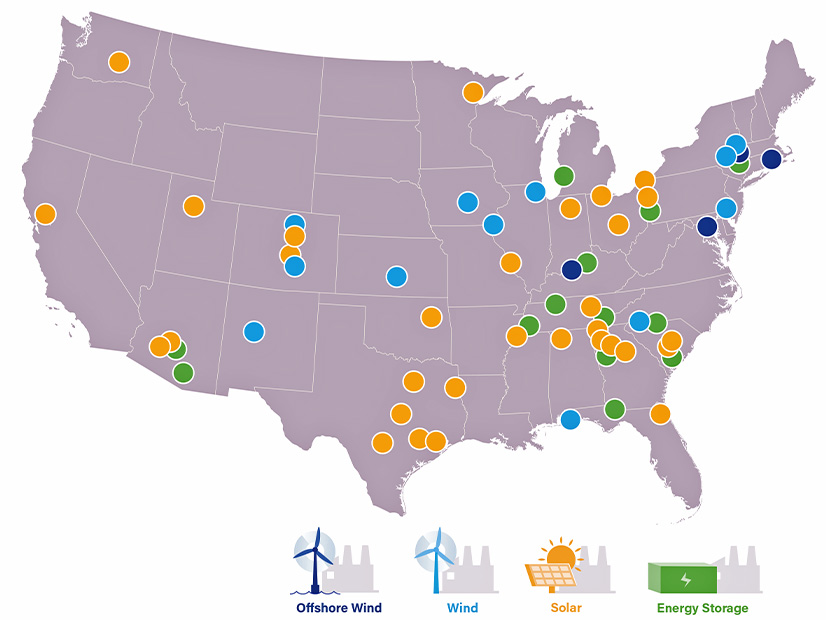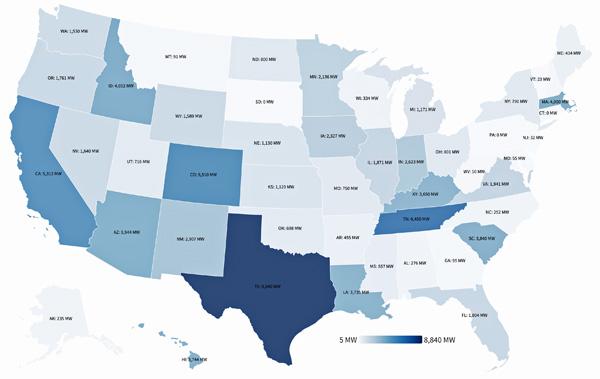Private-sector investment in clean energy has exceeded $270 billion in the past year, more than eight times as much as in the previous eight years combined, a new report states.
The report also tallies 83 new or expanded manufacturing facilities, 30,000 new manufacturing jobs and 185 GW of new nameplate capacity in the past year.
“Clean Energy Investing in America,” released Monday by the American Clean Power Association, is among a wave of reports being issued on the effects of the Inflation Reduction Act as the anniversary of its becoming law nears.
The IRA’s infusion of hundreds of billions of dollars’ worth of open-ended federal incentives arrived with state and federal policy directives in place to help those incentives attract takers, a transformational combination that has resulted in the spending documented in the ACP report.
Many of the details in the report are best-case scenarios conditioned on multiple factors falling into place, and there are potential obstacles to that happening.
As American Clean Power CEO Jason Grumet noted in his introduction to the report: “We are still not on course to create a sustainable energy economy by mid-century. … we must not lose sight of the challenges in infrastructure permitting, clean energy transmission and distribution, and the frailty of key global supply chains.”
But the tone of the report is decidedly celebratory.
“The past year has sown the seeds of nothing short of a clean energy revolution,” Grumet said.
The ACP based the report on public announcements between Aug. 16, 2022, and July 31, 2023. It focuses on the clean-energy manufacturing sector, in which it counts 83 major construction or expansion plans: 52 for solar, 14 for utility-scale battery storage, 11 for onshore wind and six for offshore wind.
This is expected to result in an annual increase in production capacity from 4 GWh to 62 GWh for batteries; 7 GW to 62 GW for solar modules; 3 GW to 35 GW for solar cells; 0 GW to 10 GW for solar ingots and wafers; and 22 GW to 29 GW for polysilicon. Wind power component data was not available.
This all comes with a price tag of more than $22 billion and is expected to create 29,780 new jobs.
The good news in job creation carries with it a complication of its own: As Grumet pointed out, recruiting, training and supporting these new workers will take a significant investment of time and money. And the 30,000 manufacturing workers are just the start — sectorwide, 550,000 new hires will be needed by 2030, he said.
ACP said other hurdles to overcome include political and local opposition to new clean energy projects; permitting delays; inflation; transmission congestion; and government policy.
ACP is a trade organization representing 750 utility-scale solar, wind, storage, green hydrogen and transmission companies.





